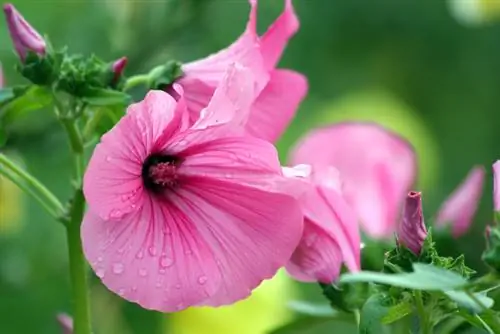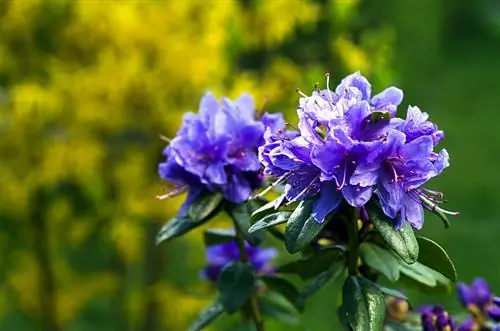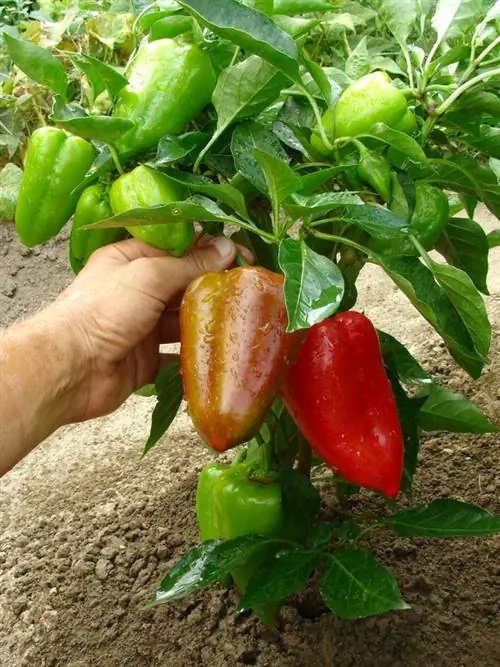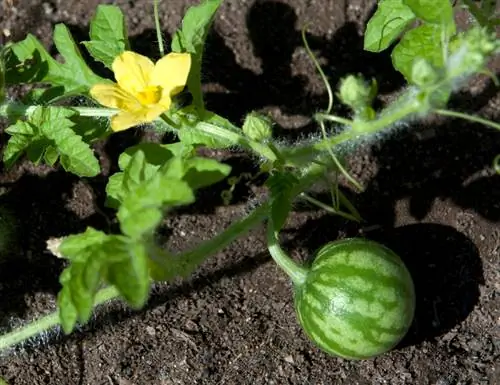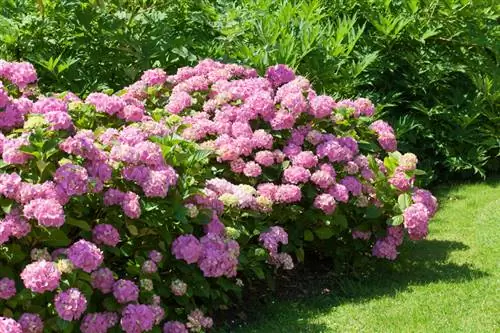- Author admin [email protected].
- Public 2023-12-16 16:46.
- Last modified 2025-01-23 11:20.
It's not one of the extremely easy-care plants, but caring for the hollyhock really isn't complicated. With its large, bright or pastel-colored flowers, it makes up for all the work because it is really very decorative.

How do you properly care for hollyhocks?
Caring for hollyhocks includes a sunny location, nutrient-rich soil, sufficient planting spacing, regular watering, fertilizing twice a year and timely pruning to encourage flowering next year.
Select the location
By choosing the right location, you are laying the foundation for the he alth of your hollyhock. She likes it very sunny. It will also bloom in partial shade, but is more susceptible to the dreaded mallow rust. So plant the hollyhock in the sunniest place you can give it.
Preparing the soil
The soil for your hollyhock should be nutrient-rich and permeable. If it is too tight, loosen it. To do this, work in some coarse sand or gravel. You can enrich nutrients with horn shavings, well-ripened compost or rotted manure.
Planting the hollyhock
Depending on the variety, the hollyhock grows to a height of around 1.70 to well over two meters. Accordingly, it also requires sufficient space. If you have decided to plant a group of hollyhocks, plan on three to four plants per square meter. If you would like to beautify a wall or fence then plant the hollyhocks at a distance of approx. 40 cm.
Water and fertilize the hollyhock
As a relatively thirsty plant, the hollyhock should be watered regularly. During the flowering period, this can be done every day. In poor soil, fertilize your hollyhock about every two weeks. If the soil is nutrient-rich, the compost from spring may be enough for the entire season. Otherwise, give a small gift in the fall.
Cutting the hollyhock
The hollyhock actually doesn't need regular pruning. The above-ground green disappears on its own in winter. But if you cut it off when it starts to wilt, you can prevent the dreaded rust fungus from harming your hollyhock. Pruning before the seeds are ripe also allows the hollyhock to bloom again next year.
Diseases and pests
Two things can particularly affect your hollyhock and cause it serious damage: on the one hand, snails and, on the other hand, mallow rust. Snails prefer to eat the young leaves, which are also edible for humans. Mallow rust appears as yellow dots on the upper side of the leaves and should definitely be combated.
The best care tips for hollyhocks:
- location in full sun if possible
- nutrient-rich soil
- don't plant too close together
- water regularly
- fertilize twice a year
- timely pruning promotes flowering next year
Tip
The most important care for the hollyhock is a sunny location and enough water.

